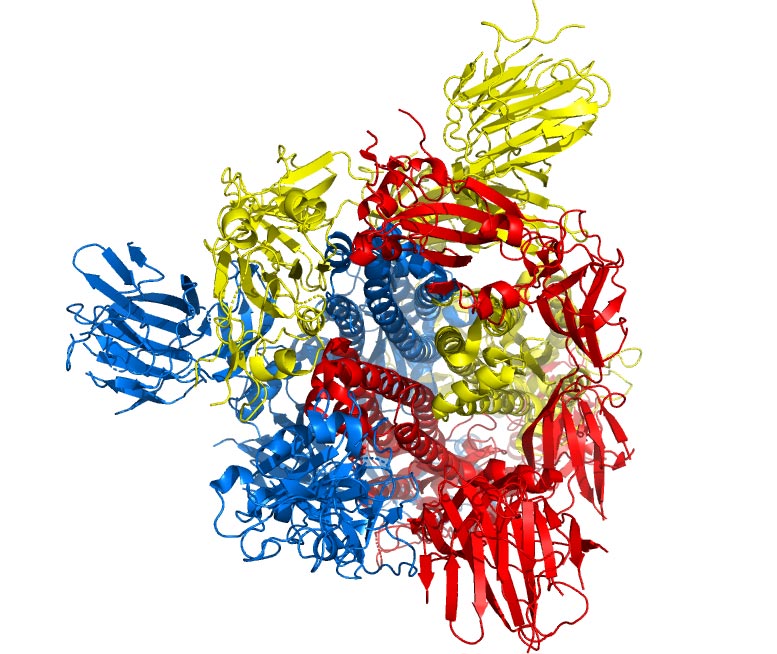
Top view of spike protein structure 6vyb. Colors blue, red, and yellow denote the 3 sub-parts of the homodimer. Credit: University of Warwick
- University of Warwick scientists model movements of nearly 300 protein structures in COVID-19
- Scientists can use the simulations to identify potential targets to test with existing drugs, and even check effectiveness with future Covid variants
- Simulation of virus spike protein, part of the virus’s ‘corona’, shows a promising mechanism that could potentially be blocked
- Researchers have publicly released data on all protein structures to aid efforts to find potential drug targets
Researchers have detailed a mechanism in the distinctive corona of COVID-19 that could help scientists rapidly find new treatments for the virus, and quickly test whether existing treatments are likely to work with mutated versions as they develop.
The team, led by the University of Warwick as part of the EUTOPIA community of European universities, have simulated movements in nearly 300 protein structures of the COVID-19 virus spike protein by using computational modeling techniques, in an effort to help identify promising drug targets for the virus.
In a new paper published today (February 19, 2021) in the journal Scientific Reports, the team of physicists and life scientists detail the methods they used to model the flexibility and dynamics of all 287 protein structures for the COVID-19 virus, also known as SARS-CoV-2, identified so far. Just like organisms, viruses are composed of proteins, large biomolecules that perform a variety of functions. The scientists believe that one method for treating the virus could be interfering with the mobility of those proteins.
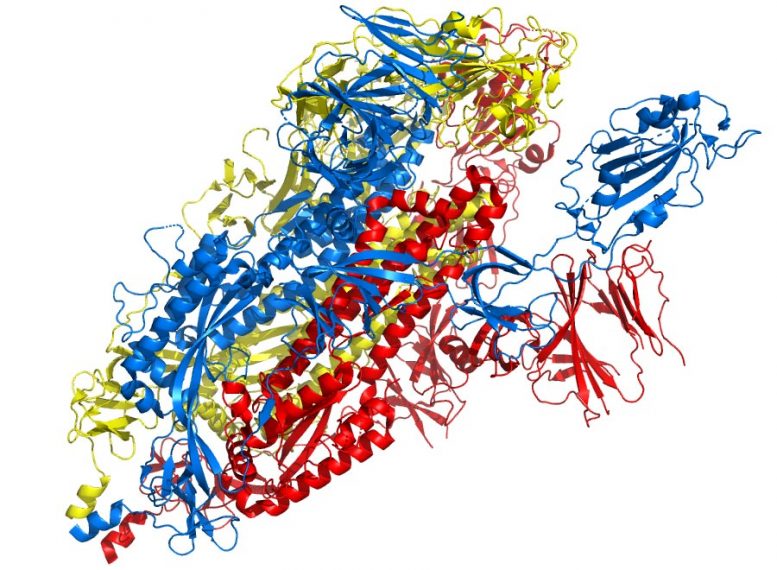
Side view of spike protein structure 6vyb. Colors blue, red and yellow denote the 3 sub-parts of the homodimer. Credit: University of Warwick
They have made their data, movies, and structural information, detailing how the proteins move and how they deform, for all 287 protein structures for COVID-19 that were available at the time of the study, publicly accessible to allow others to investigate potential avenues for treatments.
The researchers focused particular efforts on a part of the virus known as the spike protein, also called the COVID-19 echo domain structure, which forms the extended corona that gives coronaviruses their name. This spike is what allows the virus to attach itself to the ACE2 enzyme in human cell membranes, through which it causes the symptoms of COVID-19.
The spike protein is in fact a homotrimer, or three of the same type of protein combined. By modeling the movements of the proteins in the spike, the researchers identified a ‘hinge’ mechanism that allows the spike to hook onto a cell, and also opens up a tunnel in the virus that is a likely means of delivering the infection to the hooked cell. The scientists suggest that by finding a suitable molecule to block the mechanism – literally, by inserting a suitably sized and shaped molecule – pharmaceutical scientists will be able to quickly identify existing drugs that could be effective against the virus.
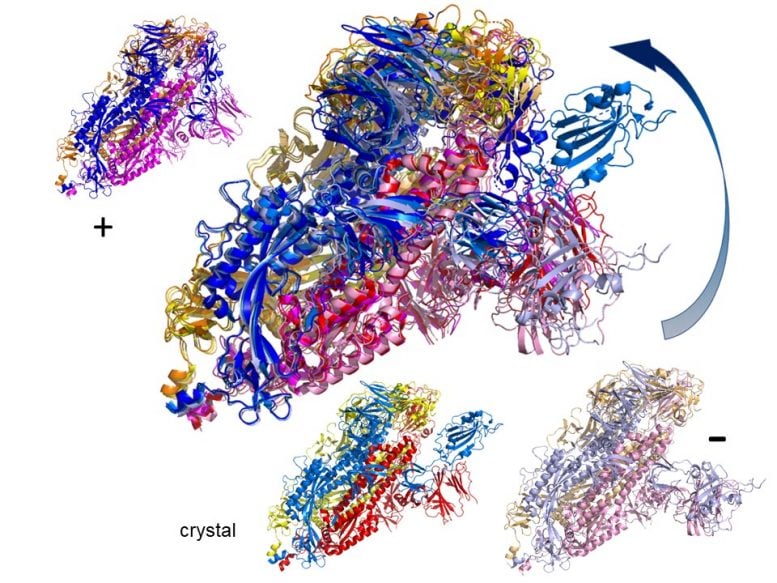
Snapshots of spike protein structure 6vyb opening and closing. The 3 small images show the crystal as well as the most closed and most opened conformation of the spike during its movement. The central, large image is a superposition of all 3 conformations. Credit: University of Warwick
Lead author Professor Rudolf Roemer from the Department of Physics at the University of Warwick, who conducted the work while on a sabbatical at CY Cergy-Paris Université, said: “Knowing how this mechanism works is one way in which you can stop the virus, and in our study we are the first to see the detailed movement of opening. Now that you know what the range of this movement is, you can figure out what can block it.
“All those people who are interested in checking whether the protein structures in the virus could be drug targets should be able to examine this and see if the dynamics that we compute are useful to them.
“We couldn’t look closely at all the 287 proteins though in the time available. People should use the motion that we observe as a starting point for their own development of drug targets. If you find an interesting motion for a particular protein structure in our data, you can use that as the basis for further modeling or experimental studies.”
To investigate the proteins’ movements, the scientists used a protein flexibility modeling approach. This involves recreating the protein structure as a computer model then simulating how that structure would move by treating the protein as a material consisting of solid and elastic subunits, with possible movement of these subunits defined by chemical bonds. The method has been shown to be particularly efficient and accurate when applied to large proteins such as the coronavirus’s spike protein. This can allow scientists to swiftly identify promising targets for drugs for further investigation.
The protein structures that the researchers based their modeling on are all contained in the Protein Data Bank. Anyone who publishes a biological structure has to submit it to the protein databank so that it is freely available in a standard format for others to download and study further. Since the start of the COVID-19 pandemic, scientists all over the world have already submitted thousands of protein structures of COVID-19-related proteins to the Protein Data Bank.
Professor Roemer adds: “The gold standard in modeling protein dynamics computationally is a method called molecular dynamics. Unfortunately, this method can become very time consuming particularly for large proteins such as the COVID-19 spike, which has nearly 3000 residues – the basic building blocks of all proteins. Our method is much quicker, but naturally we have to make more stringent simplifying assumptions. Nevertheless, we can rapidly simulate structures that are much larger than what alternative methods can do.
“At the moment, no one has published experiments that identify protein crystal structures for the new variants of COVID-19. If new structures come out for the mutations in the virus then scientists could quickly test existing treatments and see if the new mechanics have an impact on their effectiveness using our method.”
Reference: “Flexibility and mobility of SARS-CoV-2-related protein structures” by Rudolf A. Römer, Navodya S. Römer and A. Katrine Wallis, 19 February 2021, Scientific Reports.
DOI: 10.1038/s41598-021-82849-2
The University of Warwick is a founding member of EUTOPIA, a network of six European universities working together to create a new model for higher education across the continent – one that is based on increased mobility, inclusivity, and serving its six regional communities.
EUTOPIA has invested in co-teaching PhD and MA scholars between different European countries, as well as continuing to establish a growing number of academic and professional collaborations between the UK, France, Belgium, Spain, Sweden, and Slovenia, with the aim of tackling real-world challenges. In 2019, EUTOPIA was included in the prestigious ERASMUS+ ‘European Universities’ program. More information here.

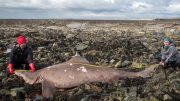





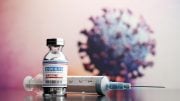
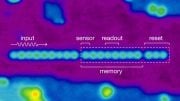
Back when I got severely Ill b4 Covid 19 was found out about all over , I had a blood culture sample taken & it’s results were were as this: positive for coccicluster streptococcus live species . A live bacteria in my blood it was August 29 th of 2019 , & I swore to myself I was dying and I was scared to death to fall asleep ! I couldn’t move couldn’t even get up to pee or get to the hospital for weeks finally did and that’s what the results were ! The nurse called demanding a re test saying it had to be a false positive because of the site I asked about the second blood draw they took outta completely opposite hand/arm how that one came back she got so upset with me and said if it were a positive test I would have been dead I mentioned to her I told the Dr that I felt IWAS IN FACT DYING WHEN I ARRIVED AT HOSPITAL ! Never heard back from Mercy Medical in Sioux City Iowa ! Then first time hearing about Covid 19 I knew right away that’s what had happened to me ! I after that stayed at a motel and after a bath I got out after soaking in a home made bath with certain things I placed together trying to fight the skin irritation and lesions I was experiencing I got out to dry off and my towel had red , Blue , & yellow polka dots all over it and I was flabbergasted? Now as I read above it makes since ! I wonder how those left my body they like absorbed on towel as I was drying off ! My name is Lori Lee Voss and my phone number is 712-509-4401 my current email address is [email protected] 909 Alice st Sioux City Iowa 51105 please contact me with any questions or info !